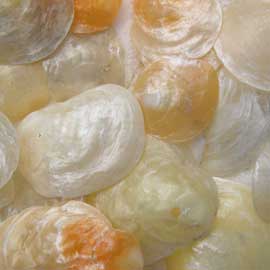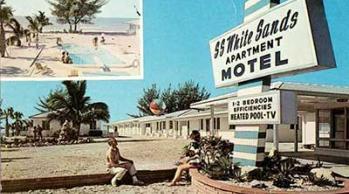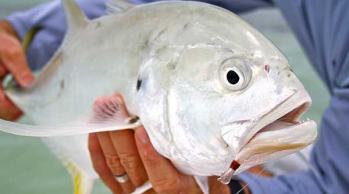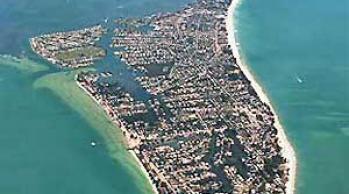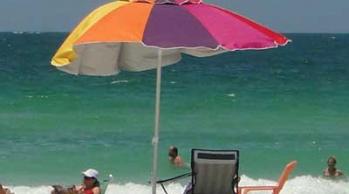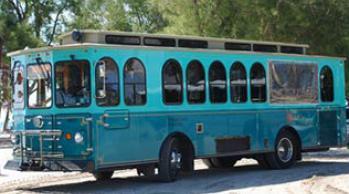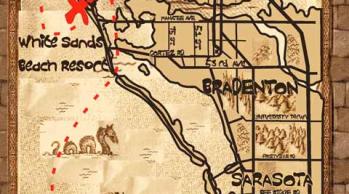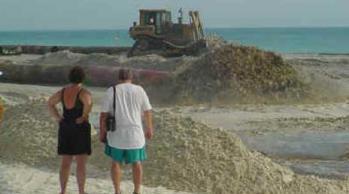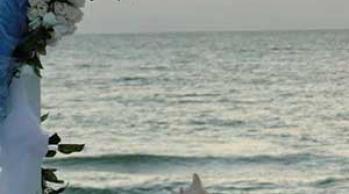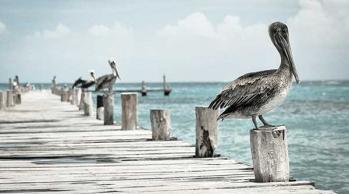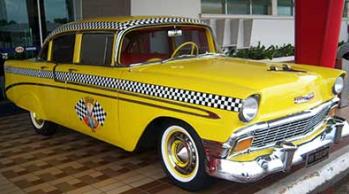Florida Shell Guide
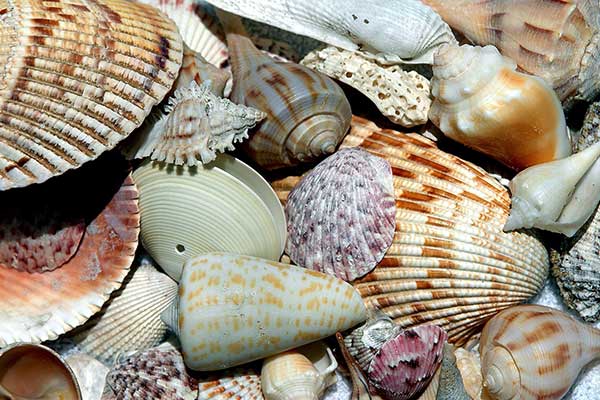
The beaches on Anna Maria Island are perfect for shelling and beach combing.
The best times to look for shells are after a high tide, after a storm, in the morning, and during the winter months.
Sand dollars are easily found during low tide on the beach near by the Sandbar Restaurant.
The following shells are commonly found on Florida's beaches. The Junonia is more rare, and is considered a special find by beachcombers.
Conch Shells
Fighting conchs are the type of conch most commonly found on beaches. While alive, the seashell is a bright orange, but will fade under the bright tropical sunshine. Conch harvesting is now illegal in the state.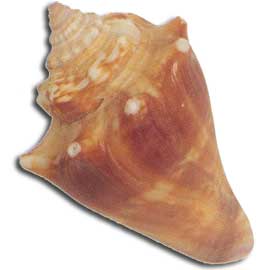
Junonia Shells
This shell is greatly prized for its beauty and apparent rarity by sea shell collectors. Its milky chamber is covered with brown spots on the outside, and the animal that occupies the shell is likewise marked.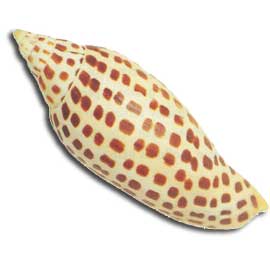
Lightning Whelk Shells
Lightning whelks grow up to 16 inches long, and were used by early island natives for boh food and tools, most commonly as lamps. This species has a left-handed or sinistral shell.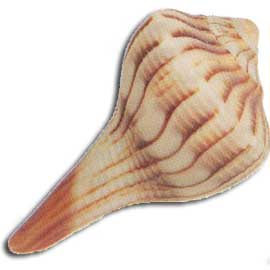
Cockle Shell
The distictive rounded Cockle shell is heart shaped when viewed from the end, and thrives in a sheltered and sandy beach. Smaller cockes are commly found, but a large intact cockle shell is a prized find.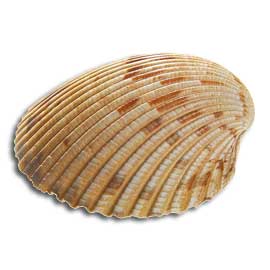
Tulip Banded Shell
Banded tulips and their larger, rarer cousins, true tulips, frequently wash up on island shores to the delight of collectors and beach combers who revel in their intriguing patterns and delicately swirling form.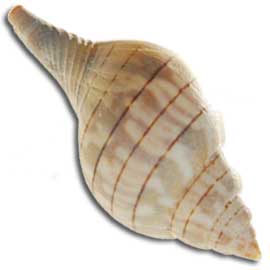
Sand Dollar Shells
While alive, the sand dollar is thin, flat, brown, and bristled with tiny tubes that permit it to breath, move and camouflage itself. Exposed to the sun, Sand dollars will bleach to a beautifully white textured pattern.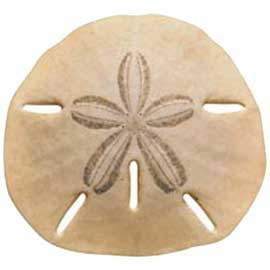
Olive Shell
Named for its elongated oval shape, the olive comes in a variety of colors and variations, and often sports a glossy finish. Olive shells will sun-bleached white and rarely grow beyond three inches long.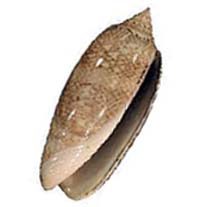
Murex Shell
The Murex or 'rock snails' can have various shapes with a long "tail" and spikes or fronds all the way down. They are hard to find in good condition because they are fragile and the surf usually destroys the spikes.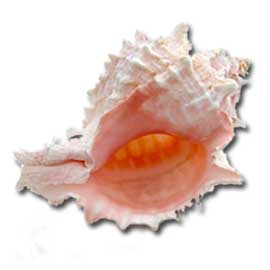
Coquina Shells
Coquinas are not much bigger than a dime, and come in many colorful patterns, stripes, solids, and even plaids. You will most likely see live coquina's digging their way into the sand when the waves recede.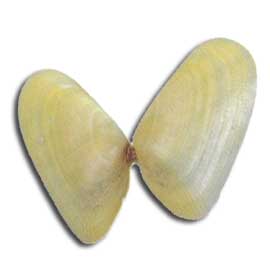
Ceriths Shells
The Ceriths found on AMI are also known as horned shells, and are commonly found on sandy bottoms, and beaches and vary in size and ornament, most found are an inch in length. Common varieties: Varicose, Grass, Dark, Stocky, Fly Speck, and West Indian False.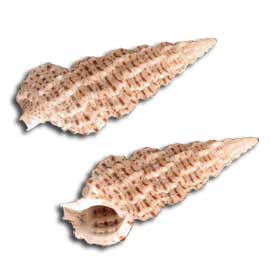
Worm Snail Shells
Worm snails are very irregular elongated tubular shells, and look like spaghetti stuck to a rock. Sometimes billions of worm tubes can build an actual reef. A large reef like that forms a barrier to a group of small islands called the Ten Thousand Islands.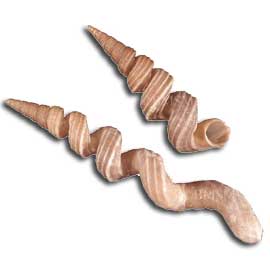
Spotted Slipper Shells
Spotted slipper shells are often called "boat" shells. When upside down, it looks like an old sailing ship with a flat deck. After 2 years of floating loose, they will attach themselves to a rock or empty shell.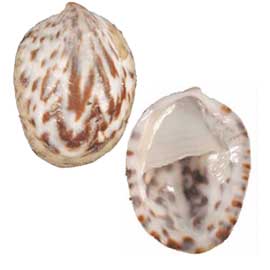
Limpets
Limpets there are 35 different species and sub species of Limpets in North America. Keyhole Limpets have an opening in the top of the shell. Limpets shells are conical or cap shaped without spiral whorls.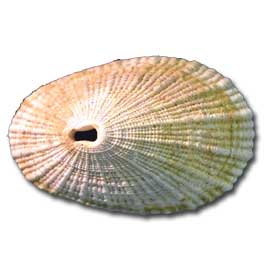
Turkey Wing Shells
Turkey wings are easy to identify. Because the shells vaguely look like outstretched bird wings they're called Turkey Wings. Shell is a little over two inches long, oblong, with one side more or less straight.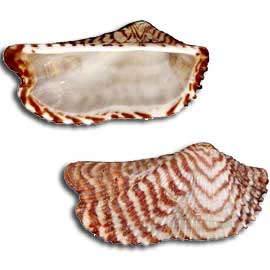
Wentletrap Shells
Wentletraps, staircase shells, or ladder shells, are notable for their intricately shell structure. Most species of wentletrap are white, and have a porcelain-like appearance. These shells are prized by collectors.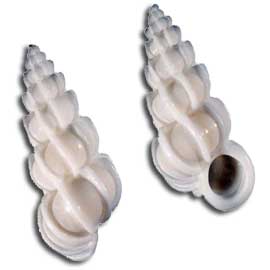
Calico Scallop
Brightly colored in shades of red and pink, fan-shaped shells of some scallops, with a radiating fluted pattern, are valued by shell collectors. Up to 2 inches in length, patterns on this clam are diverse and beautiful.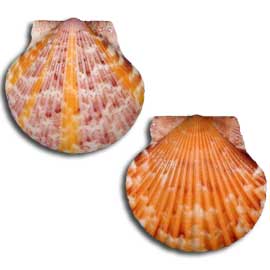
Florida Spiny Jewelbox
About 1-1/2 inches in length, the Florida Spiny Jewel Box is found along the coast of Florida. It is white; the interior may show tinges of pink or red. The shell itself is thick and heavy for its size.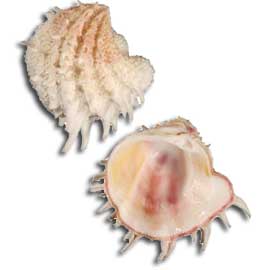
Jingle Shells
Jingle Shells are wrinkled and polished looking and come in a variety of translucent colors from shades of orange to dark gray, with white and off-white being common as well. They make a jingling sound when shaken.